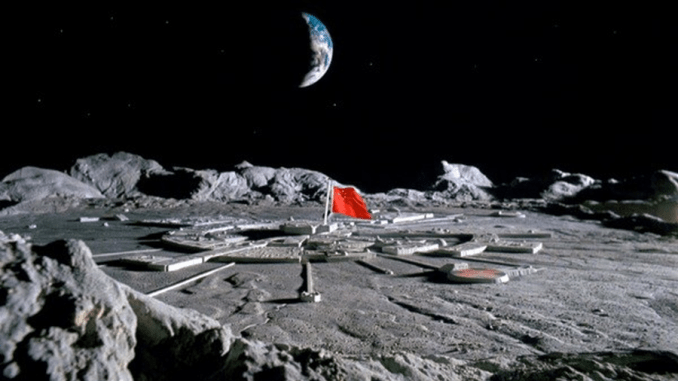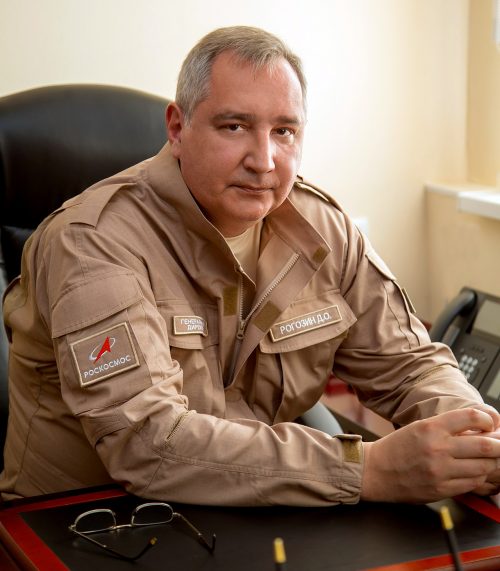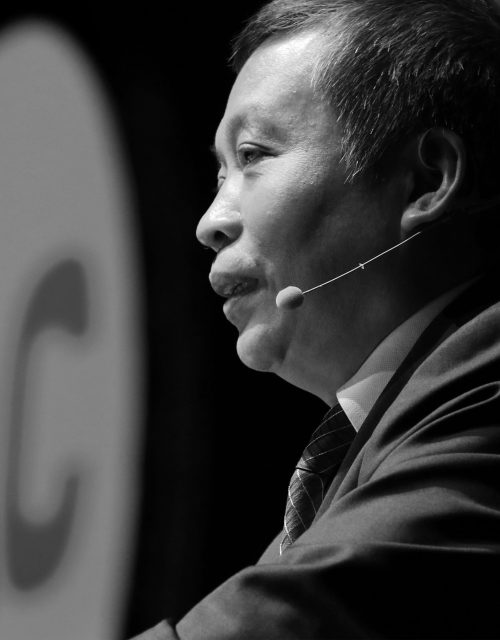
China and Russia are now officially planning to build a research station together on the moon. There were hints of their plans to do so as early as 2017, when People’s Daily reported on the possibility. On March 9, 2021, the China National Space Administration (CNSA) at last made the announcement in a formal memorandum, which also gave the base its name: the International Lunar Research Station. CNSA officials wrote in the announcement:
On March 9, Zhang Kejian, the administrator of China National Space Administration (CNSA), and Dmitry Rogozin, the General Manager of [Russia’s] State Space Corporation ROSCOSMOS, signed the Memorandum of Understanding between the Government of the People’s Republic of China and the Government of the Russian Federation Regarding Cooperation for the Construction of the International Lunar Research Station. CNSA and ROSCOSMOS will adhere to the principle of “co consultation, joint construction, and shared benefits, etc.” …
The International Lunar Research Station is a comprehensive scientific experiment base with the capability of long-term autonomous operation, built on the lunar surface and/or [in] lunar orbit that will carry out multi-disciplinary and multi-objective scientific research activities such as lunar exploration and utilization, lunar-based observation, basic scientific experiment[s] and technical verification.
Moreover, according to the memorandum, the project will:
… facilitate cooperation between all interested countries and international partners, strengthen scientific research exchanges, and promote humanity’s exploration and use of outer space for peaceful purposes.


A definitive target deadline hasn’t yet been shared with the public, but it’s an ambitious plan. And, it’s rumored that China wants its moon base done before 2031. This date might be overzealous considering the rate at which space exploration missions tend to be plagued with delays, but, nevertheless, China appears to be fully committed, and it seems that Russia is, too.
China sat out the famous 1960s space race between the Soviet Union and the U.S., which ultimately launched the first humans to the moon in 1969. But, in recent years, Russia’s space program has been ongoing, and China been making up for lost time. China has launched several robotic missions to the moon and Mars as well as successfully landed on the moon’s far side, making it the only country to accomplish that feat. More recently, China’s sample return mission from the moon made history thanks to the incredible speed at which the country landed, collected samples, and shot them back into space. Meanwhile, Tianwen-1 is a Chinese probe that entered Mars orbit on February 10, 2021; it’s set to land a rover on Mars’ surface this May or June.
NASA has plans for a human presence on the moon as well. It involves the Gateway project, which NASA calls an “outpost” orbiting the moon, designed to provide vital support for a sustainable, long-term human return to the lunar surface, as well as a staging point for deep space exploration. Gateway is a critical component of NASA’s Artemis program, which – under the Trump administration – was said to be scheduled to send astronauts to the lunar surface by 2024 (although delays in developing necessary technologies, along with the pandemic, has made that date seem unlikely). The goal of Artemis is to establish a long-term, sustainable human presence on and around the moon by the end of this decade. All indications so far are that Artemis 1, an uncrewed flight, is still scheduled for launch in November 2021 from the agency’s Kennedy Space Center in Cape Canaveral, Florida. That’s despite a reported component failure on the cone-shaped Orion space capsule, the vehicle that ultimately will carry astronauts back to the moon. NASA isn’t developing Artemis alone, and has deals with several private sector partners. In fact, eight other nations have signed the Artemis Accords, which reserves participation in the program. Brazil’s government has indicated it eventually plans to sign the Accords as well.
Russia and China, however, are not among the signatories for Artemis. Russia has worked extensively with the U.S., most notably for their collaboration on the International Space Station program. But Roscosmos chief Dmitry Rogozin has said that Russia’s participation in Artemis is unlikely. And China can’t legally participate substantially in Artemis, at least without new U.S. legislation. Since 2011, NASA has been prohibited from cooperating on space projects with their Chinese counterparts, unless Congress approves such cooperation in advance.
There’s no word yet on how the U.S. or NASA is reacting to the news about the China-Russia moon base. But we might hear from NASA on the subject as soon as China begins to launch the missions that will lay the groundwork.

Bottom line: China and Russia are planning to build a research station on the moon. The announcement was made online on March 9, 2021, by the China National Space Administration and Roscosmos, Russia’s federal space agency. They’re calling it the International Lunar Research Station. It’s rumored that a target date for completion is 2031.
Read more: NASA’s moon program – Artemis – boosted at White House press briefing
Read more: New images from China’s Tianwen-1 mission to Mars











